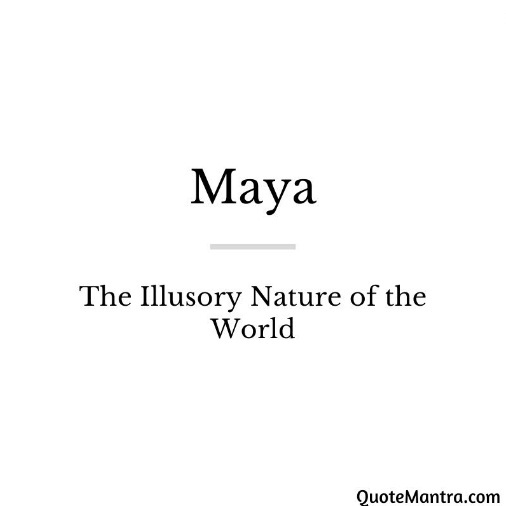
Maya: The Illusory Nature of the World
Maya, the illusory nature of the world, is a concept that lies at the heart of the teachings found within the Ashtavakra Gita, an ancient spiritual scripture from India. This profound text explores the deceptive appearances that veil ultimate reality, urging individuals to question the solidity and permanence of the external world. Maya creates a false sense of separateness, perpetuating the illusion of a separate self and subject-object relationship. In this article, we will delve into the understanding of Maya according to the Ashtavakra Gita, shedding light on its transient nature, its influence on human perception, and the transformative path towards liberation from its illusions. By gaining insights into Maya’s illusory nature, we can embark on a journey of self-realization and discover the profound truths that lie beyond the veils of illusion.
Maya, the concept of illusion, holds a central place in the teachings of the Ashtavakra Gita, an ancient spiritual scripture from India. Maya refers to the deceptive nature of the world and the veil it casts upon individuals, hindering their perception of ultimate reality. In this article, we will explore the understanding of Maya according to the Ashtavakra Gita, its implications on human experience, and the path to liberation from its illusions.
1. Maya as Illusion: According to the Ashtavakra Gita, Maya is the fundamental illusory aspect of existence. It is the power that creates a false sense of reality, deceiving individuals into perceiving the world as separate, solid, and permanent. Maya veils the truth of interconnectedness and perpetuates the notion of duality, subject-object relationships, and the illusion of a separate self.
2. The Nature of Maya: Maya is described as an ever-changing and transient force. The Ashtavakra Gita emphasizes that the world perceived through the senses is in a constant state of flux. It teaches that what appears real in one moment may dissolve or transform in the next. Maya captivates human perception, leading individuals to believe in the solidity and permanence of the external world.
3. The Illusion of Identification: One of the key insights offered by the Ashtavakra Gita is the understanding that Maya extends beyond the external world. It also influences the way individuals perceive themselves. Maya creates the illusion of a separate self by fostering identification with the body, mind, emotions, and personal history. The identification with this illusory self reinforces the belief in separateness and perpetuates suffering.
4. Liberation from Maya: The ultimate goal of the Ashtavakra Gita is to liberate individuals from the illusions of Maya and awaken them to the deeper reality. The text teaches that self-realization is the key to transcending Maya. By cultivating self-awareness and questioning the nature of existence, individuals can gradually free themselves from the grip of Maya and experience liberation (moksha).
5. Maya and Self-Realization: Maya, in its illusory nature, can serve as a catalyst for self-realization. The Ashtavakra Gita suggests that the disillusionment with Maya prompts individuals to seek something beyond appearances. It awakens the longing for the eternal and unchanging truth. By recognizing the limitations and transient nature of Maya, individuals are spurred on the path of self-inquiry, leading to the direct realization of their true nature.
6. Transcending Maya: The Ashtavakra Gita teaches that transcending Maya requires a shift in consciousness. It involves a deep understanding and recognition that the external world and the illusory self are not the ultimate reality. Through self-inquiry, meditation, and the cultivation of detachment, individuals can gradually transcend Maya’s grip. They can attain a state of awakening where they realize their true nature as pure consciousness beyond the illusions of Maya.
Conclusion: Maya, the illusory nature of the world, is a fundamental concept in the Ashtavakra Gita. It invites individuals to question the reality presented by their senses and recognize the deeper truth that lies beyond appearances. By understanding Maya as the veil that obscures ultimate reality, individuals can embark on the path of self-realization. Through self-inquiry, detachment, and transcending the illusions of the ego, one can liberate themselves from Maya’s grip and experience the timeless truth that underlies all illusions. The Ashtavakra Gita serves as a guiding light, illuminating the path towards liberation from the illusions of Maya.
Also read: Self-Realization: Insights from the Ashtavakra Gita




